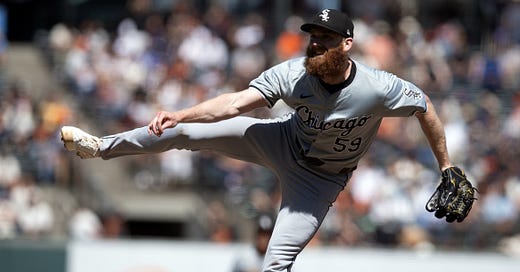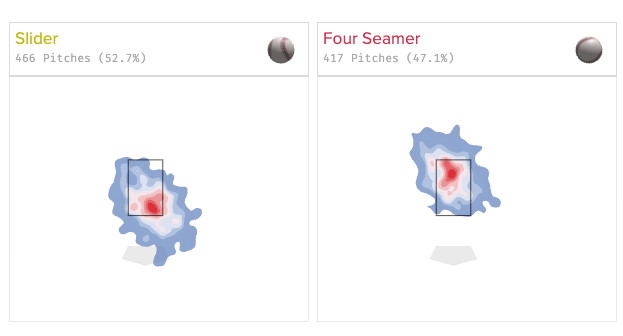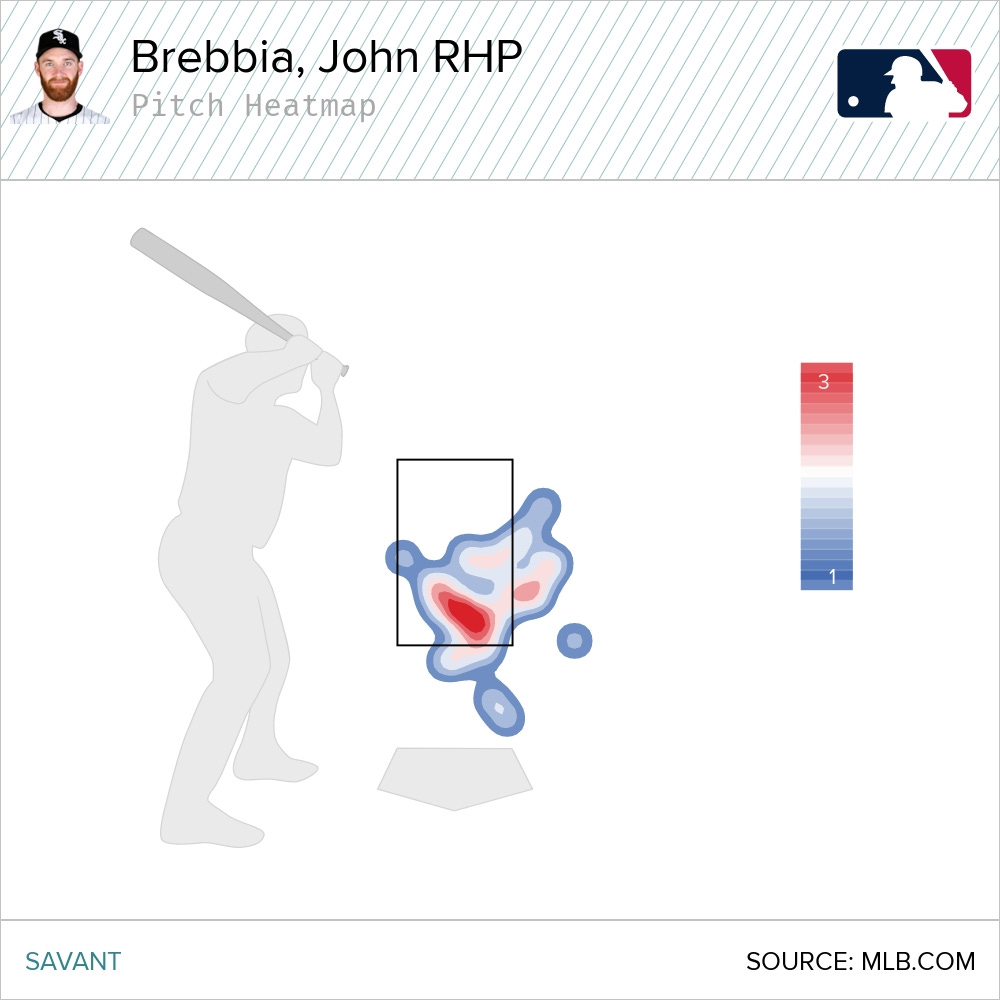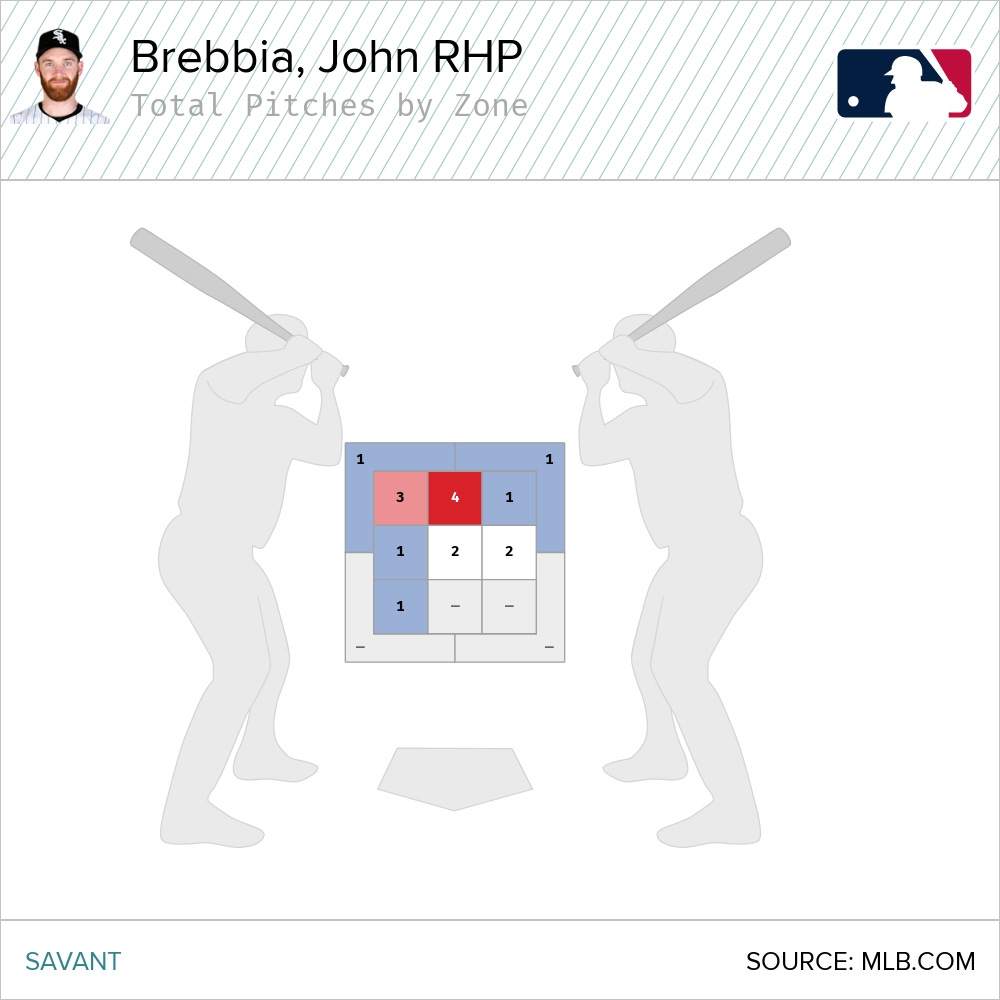What did the Atlanta Braves see in John Brebbia?
The Atlanta Braves made their roster expansion moves on Sunday morning, but the pitching move took a few by surprise
The Atlanta Braves shocked most of Braves Country when they announced the players selected to fill the two new spots created by the September roster expansion.
Eli White made sense; the outfielder spent time on the major league roster this season and actually got two starts in centerfield shortly before Michael Harris II returned from his hamstring injury. He can play defense late in games, can be a pinch-runner, and could probably surprise with the bat if a pitcher isn’t careful - four of his six hits this season are for extra bases, including a triple and a homer.
But John Brebbia over flamethrowing reliever Daysbel Hernández? Why would they sign and select a reliever that was designated for assignment by the Chicago White Sox after putting up a 6.29 ERA?
Let’s try and figure that out together.
John Brebbia hasn’t been as bad as the stats make it look
The White Sox are, to put it politely, bad. At 31-106, they’re on track to potentially be one of the worst teams in baseball history. They lost 21 consecutive games over the summer, firing manager Pedro Grifoil once they finally got back into the win column. Their -289 run differential is not only worst in all of baseball, it’s by far the worst - only one team, the Colorado Rockies at -208, are within a hundred runs of Chicago.
But even on a bad team, Brebbia’s struggled. His 6.29 ERA is tied for 2nd-worst among relievers with at least 50 appearances this season, behind just David Bednar of the Pittsburgh Pirates (6.32) and tied with Tyler Kinley of the Colorado Rockies (6.29).
So why did Atlanta pick him up?
Think about Pierce Johnson last year.
The Braves acquired Johnson (and lefty Brad Hand) from the Colorado Rockies at the trade deadline and Pierce was in a similar spot last year to Brebbia now: a 6.00 ERA in 43 appearances for Colorado.
Down the stretch, Johnson pitched to a 0.76 across 24 appearances for Atlanta and signed a two-year, $14.25M deal to return this offseason and work as a setup man for Raisel Iglesias.
The improvement for Johnson came from a few factors: A better team, a better home pitching environment (virtually anywhere is better for a pitcher than Coors Field), and an arsenal change - the Braves dramatically upped Johnson’s curveball usage down the stretch.
Brebbia could be similar.
Let’s look at what he does well and where we could expect to see some immediate improvements.
Brebbia can miss bats…at times
Brebbia’s in a weird place of both giving up a lot of contact and missing a lot of bats. His batting average allowed this season is .265 (and that’s actually an improvement over the xBA of .272) but he’s also holding a healthy strikeout rate of 26.9%, above his career average.
What’s going on there?
I’ve got two theories. The first is his locations.
Brebbia tends to work the slider down and the fastball up, which…yeah, that’s what you do with that two-pitch pairing.
But the locations aren’t as crisp as you’d like in certain situations. Brebbia’s slider has given up 36 hits this season - 28 have gone to righties despite a closer to even split than normal (117 PAs to righties, 99 to lefties).
And it’s because his slider tends to miss gloveside and up against righties (these are from the catcher’s POV).
See that red bubble on the outside of the zone? Those pitches are not supposed to be up, but rather below the zone. Check out this location to Orlando Arcia - this pitch wasn’t supposed to be above the knees.
It’s a common mistake that Brebbia makes - nine hits off the slider in that outside corner zone is his most commonly hit location against righties.
This feels like a target adjustment is in order - set up a bit lower, the pitch probably comes in a bit lower and you can minimize the misses up like this.
But another adjustment might be using the fastball more, which defies conventional logic in modern MLB.
Despite the poor season and overall results Brebbia’s having, his fastball actually has a positive run value of +4, with opposing hitters batting just .186 with a .326 slug off the pitch.
(His slider, by comparison, is worth -16 Run Value and opponents are batting .327 with a .564 slug. That run value is tied for worst for any individual pitch in baseball, equaling the four-seam fastballs of Kenta Maeda of the Detroit Tigers and Triston McKenzie of the Cleveland Guardians, who is now in Triple-A.)
But back to the fastball: It has outlier horizontal movement, something I think helps give an unusual look. At 9.6 inches, it moves 31% more than the average four-seamer when you control for velocity, extension, and release point.
That outlier horizontal movement obviously ties up hitters a bit - here’s Eddie Rosario, then with the Nationals, missing a middle-middle heater:
Guessing he thought it would be inside for a ball. Still too close to take on a 1-2 count.
This at-bat notwithstanding, the fastball’s given up only 16 hits all season and most of them came on a pitch that was left over the plate.
But again, Brebbia’s fastball works because it has more horizontal movement than hitters are expecting.
The slider, by comparison, is not working because it both gets left too high in the zone and doesn’t drop enough to fool a hitter.
And now to the actual point I’m trying to make: This slider shouldn’t be thrown 5.6% more than the fastball.
If the slider has average at best drop (39 inches is 1% more than MLB average, again when controlled for velocity, extension, and release point) and he can’t reliably keep it down, use the fastball more (and try it get it more on the edges of the zone versus middle-up) to “buy back” the slider and preserve the ability to miss a bat with it.
(Here’s the excellent
breaking down the concepts of “buyback” and “decay” when it comes to pitches. Go subscribe to his Substack, Lance’s Pitcher Notes, for more awesome pitcher-nerd content.)Will throwing the fastball more perhaps allow hitters to be a bit more successful against it? Sure. But adding twenty points of batting average off of the heater is a worthwhile tradeoff if it gets you fifty more points of BAA on the slider.
There aren’t very high stakes here
By selecting Brebbia to the 40-man roster now, he’s eligible for Atlanta’s postseason roster. (Guys that aren’t on the 40-man as of today can be added to a postseason roster if they’re replacing an injured player and if the Commissioner’s Office approves the replacement, which they almost always do.)
Look, at the end of the day: Brebbia’s a veteran that’s had some success in the Major Leagues. You don’t need him to be your closer or primary set-up man, you just need him to be marginally better than the final two spots in the bullpen, currently occupied by Jesse Chavez and Luke Jackson.
And now you get a month to see if he is.








For some reason, the videos in here disappeared. They have now been restored. Sorry about that!